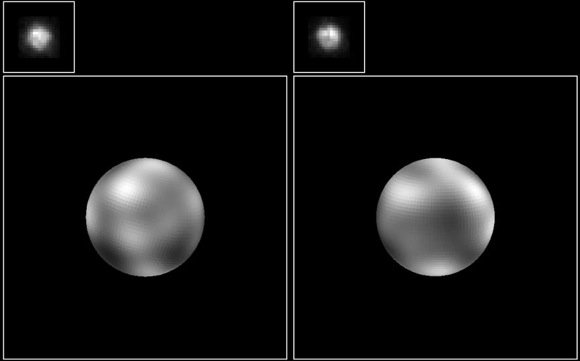When you imagine cold, icy Pluto, orbiting in the distant regions of the Solar System, you imagine snowy white ball.
You can also look through these books from Amazon.com if you want more information about Pluto.
But images of Pluto, captured by the Hubble Space Telescope have shown that Pluto’s surface isn’t just pure ice. Instead, it has a dirty yellow color, with darker and brighter regions across its surface. Hubble studied the entire surface of Pluto as it rotated through a 6.4 day period.
The images revealed almost a dozen distinctive features never before seen by astronomers. This included a “ragged” northern polar cap cut in half by a dark strip, a bright spot seen to rotate around the dwarf planet, and a cluster of dark spots. The images also confirmed the presence of icy-bright polar cap features.
Some of the variations seen on Pluto’s surface could be topographic features, like basins and fresh impact craters. But most of them are probably caused by the complex distribution of frosts that move across Pluto’s surface during its orbital and seasonal cycles.
The surface area of Pluto is 1.795 x 107 square kilometers; about 0.033% the surface area of Earth.
When Pluto is furthest away from the Sun, gases like nitrogen, carbon monoxide and methane partially freeze onto its surface.
All will be revealed when NASA’s New Horizons spacecraft finally arrives at Pluto in 2015, finally capturing close-up pictures of Pluto and its moon Charon.

